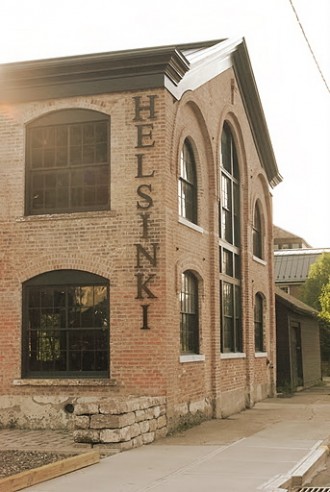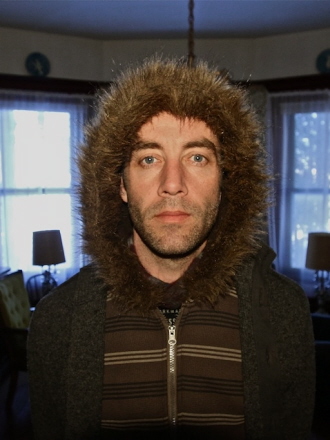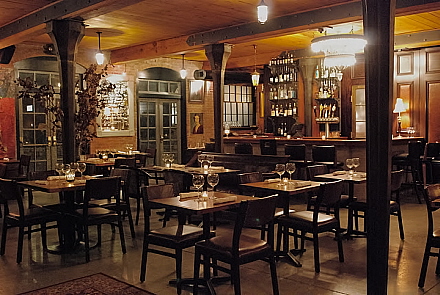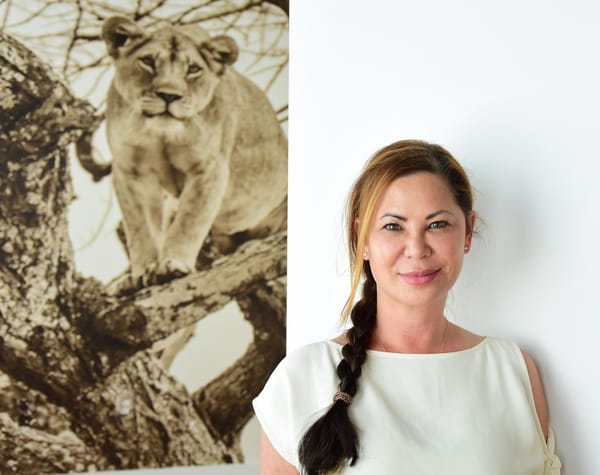Once construction was finally done, Club Helsinki Hudson proceeded to have such a prolonged, soft opening—months of sound checks, followed by a long wait for the chef, Hugh Horner, to finally take up his post—there was never a clear ta-dum! moment for the rejoicing to begin. Even so, jubilation has not been in short supply. For many, the night-of-opening-nights was May 1, when co-owner Mark Schafler, a familiar figure from his 15-years at the 75-seat Club Helsinki in Great Barrington, took to the stage to introduce the band Spottiswoode and His Enemies, and said, "We’re finally able to answer the question, ‘When?’ The answer is, ‘Now!’” Despite the absence of alcohol in the house that night, the sold-out crowd responded with thunderous applause.

For others, the night when it became clear what Helsinki would mean to Hudson's burgeoning music scene was in September when Schafler and his partner in all things, the club's co-owner Deborah McDowell, hosted a "barn raising" for the local radio station WGXC. "The cream of the local musicians was there," says the hip-hop artist Young Paris (right), who grew up in Hudson and New York City. "Artists from one group sat in with another, crossing genre lines in a way you don't often see. It was an amazing event." For yet another constituency, the great awakening occurred on October 2, when the classical group Claverack Landing played with violinist Katie Hyun. Before the concert, the booths and tables in the theater filled up mostly with the gray-heads one expects at a classical concert, all raving about the superb bar food. Then, just as the music was about to start, every inch of standing room suddenly filled with young hipsters, one sporting a baby on her hip. Stunned, some of the gray-heads huddled to whisper, "Where did all these attractive kids come from?"

For Schafler and McDowell, who view their club as a business, a labor of love, and a community asset that they generously make available to many a worthy cause, the "bravura moment" of all their years of effort may have been just this past weekend at the Columbia Memorial Hospital fundraiser held at the club. "Our ship was in full sail," McDowell says. "We had people everywhere, from the theater to the ballroom upstairs. The staff was impeccable, and I got to watch it all work flawlessly. And, come on, Sonny Rollins...!?" "I always had a vision of Sonny Rollins on our stage," says Schafler. "Over the years, we've produced over 1500 shows, but I have to tell you, I cried during sound check. Sonny had the walls talking. It was so glorious." Like Club Helsinki, the music scene in Hudson crept softly into town. Henry Hirsch, Lenny Kravitz's longtime producer, opened his Waterfront Studio there in 2008. Steve Durand, also a producer, first visited the city in March 2009, to attend the housewarming party on Allen Street of a friend from Montreal, the singer/bassist Melissa Auf der Maur, who, before going solo, had performed with Smashing Pumpkins and Courtney Love's band Hole. (Auf der Maur, her husband, the filmmaker Tony Stone, and Stone's parents, both artists, also own The Basilica, another 19th-century factory-turned-art space in Hudson.)

"By the time I parked the car, I was already in awe," Durand (right) recalls. " I came for the weekend and ended up staying two weeks." What he saw that day was a small city (pop: about 7,000 in 2 square miles) with a beautiful infrastructure on a train line a mere two hours from New York—or "just another borough," as he puts it. What he sensed was a hotbed of possibility, much like Montreal had been in the early 1990s—"exciting, bohemian, and cheap." Last spring, Durand bought a house on Columbia Street, where he now lives and maintains a busy recording studio. To Durand, Helsinki is not just the icing, it is also at least the top layer of the cake. "A club like Helsinki should not exist in a city smaller than Chicago," he says. ""I have toured all over the world. Most music venues for under 400 people are complete dives. Backstage, the artists are crowded into a filthy, little room, where they're lucky if somebody tosses them a six-pack." Backstage at Helsinki, there is a spacious lounge with showers. Performers are welcome to dine in the restaurant, and there is a separate Helsinki-owned house around the corner where, once the renovation is complete, they may spend the night—no small asset in hotel-room strapped Hudson. But, by all accounts, the greatest draw from artists' perspective are the acoustics in the arena-like theater that seats 235—and holds many more than that for standing-room-only events. "They are studio quality, as opposed to live-sound quality," Durand marvels. "The main mixing board—you may see one that good in a recording studio but never in a club. That alone would attract world-class acts."

Built in 1863 as the headquarters of Traver’s Sash, Blind, and Door, the building Schafler and McDowell bought in 2003 was, as Schafler describes it, "in need of love." It was also in need of money, and, like doting parents, its new owners stinted on neither. Today, their love child is nothing short of ravishing. Enormous, locally crafted, arched windows flood the restaurant and ballroom with light during the day—an extravagance for venues that are mostly used at night, but typical of Schafler's do-it-right-at-all-costs approach to the renovation. The main performance space is ingeniously separated from the 175-seat restaurant by beautifully detailed vintage chestnut sliding doors that bisect the generous L-shaped bar, so when closed, each space retains its fair share. The columns in the restaurant are vintage street lamps turned upside down. The locally-forged iron staircase leading to a glamorous second-story ballroom (capacity: 250), which double as bleachers when the doors between the bar and the theater are open, is modeled after one the couple saw in a photograph of the London-Liverpool train station. Come summer, there will be an outdoor dining space.

Despite the deep talent pool of local designers and artisans Schafler employed, his cleverness with materials, and his experience as a general contractor, he and McDowell could not have completed the project had a third partner, Cameron Melville, who now lives in Hillsdale, not stepped in. Melville, a rock-and-blues pianist and organist who performs under the name Bo Hammond, is also a force behind another years-in-the-making music venue in downtown Los Angeles. "He is a visionary who steps in and provides the tipping point to make good things happen," Schafler says. Melville brings more than money to the table; he also brings a missionary's zeal for inventive urban renewal. Schafler is no slouch in the zealotry department himself. When asked what the future holds for Hudson, he confidently predicts, "It is going to be the next Nashville." We'll see. But, meanwhile, one thing is certain: Hudson has changed yet again. Having long since shed it's identity as one long Antiques Row, it assumed another as a great shopping-and-eating center. But close observers of the scene notice signs of continuing evolution. "It used to be, when I'd step outside my shop, I'd know everyone on the street," says Stefan Friedemann, owner of the art jewelry gallery Ornamentum. "Now there are all these young people." As one Warren Street flâneur, a gentleman of a certain age, gratefully adds, "Music has brought to Hudson a crucial element that was always missing from it's street life—pretty girls!" Club Helsinki Hudson405 Columbia Street, Hudson; 518.828.4800








